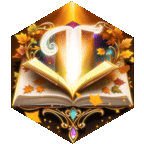Verified: a year ago
SafeTensor
Created on Civitai
The FLUX.1 [dev] Model is licensed by Black Forest Labs. Inc. under the FLUX.1 [dev] Non-Commercial License. Copyright Black Forest Labs. Inc.
IN NO EVENT SHALL BLACK FOREST LABS, INC. BE LIABLE FOR ANY CLAIM, DAMAGES OR OTHER LIABILITY, WHETHER IN AN ACTION OF CONTRACT, TORT OR OTHERWISE, ARISING FROM, OUT OF OR IN CONNECTION WITH USE OF THIS MODEL.
From the 1960s to the 1980s, movie posters became more stylized and experimental, reflecting the changing cultural landscape. During the 1960s, posters embraced the bold, psychedelic art style of the era, with vibrant, contrasting colors and striking, hand-drawn illustrations. The designs often featured dramatic compositions with exaggerated features and expressions, highlighting the action and emotions of the film. The posters for James Bond movies, for example, showcased elaborate, action-packed scenes with guns, glamorous women, and iconic typography, capturing the spy-thriller vibe. In the 1970s, the rise of blockbuster films like Jaws and Star Wars shifted the focus toward more iconic, singular imagery—think of the ominous shark beneath a swimmer or the lightsaber held high against a starry sky. This era leaned towards a mix of hand-painted art and photography, emphasizing realism while still using illustrated elements to evoke a sense of adventure and spectacle.
By the 1990s and into the 2000s, the style of movie posters changed dramatically with the advent of digital design tools and the growing influence of marketing strategies. Posters started relying more heavily on photo manipulation and digital effects, creating sleek, polished visuals that often featured close-ups of the stars’ faces, highlighted by dramatic lighting. The trend shifted towards "floating head" designs, especially for big-name ensemble casts, where the actors' faces were layered over a key visual scene from the movie. This era also saw a standardization in the use of color palettes: deep blues and oranges became popular for action films, while romantic comedies favored pastel tones. The typography became bolder and more uniform, often incorporating the now-familiar "blockbuster" font styles, designed to be easily recognizable in print and digital formats alike.
This is my attempt at creating a lora for FLUX that represents these values.
Best Basic Settings:
Sampler: DPM++ 2M OR Euler [Scheduler type of Simple Or Beta]
Sampling Steps: 20
CFG Scale: 3.5
LORA Weight: 0.8-1 [1 seems to work best]
Trigger Word: classicposter


